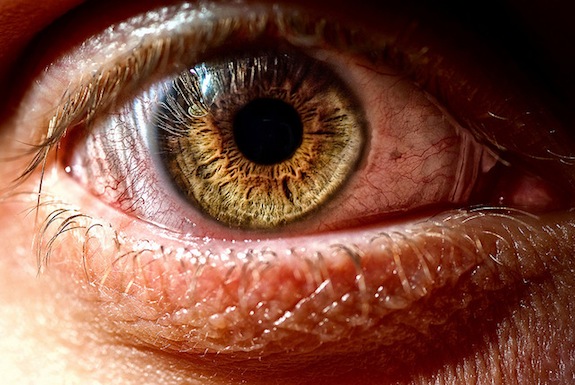What Makes Muscles Twitch?
Whether it’s your eyelid twitching, an involuntary shudder, or a muscle elsewhere contracting at random, twitchy muscles happen to everyone. But what are they, and why do they happen?

Image: Attica Acs
Every once in a while, your muscles go rogue on you. Whether it’s your eyelid twitching, an involuntary shudder, or a muscle elsewhere contracting at random, twitchy muscles happen to everyone. But what are they, and why do they happen? Popular Science says most twitches are called “fasciculations”:
Fasciculations are the result of some kind of irritability of the nerve fibers. Because fasciculations are benign, they haven’t been studied particularly deeply. (But, not all involuntary muscle twitches are fasciculations–more on that later.) So we don’t really know even where in the nerve the irritation is picked up–it could be in the cell body, could be further out in the fibers, nobody really knows. It is also thought that the exact localization of the fasciculation is random, meaning that you will feel a twitch in your arm or leg or eyelid without having necessarily irritated a nerve anywhere near the place you experience the twitch.
No one really knows what triggers them. It’s probably stress or lack of sleep; other theories cite caffeine, too much exercise and a lack of magnesium. But no one has proved any of those conclusively. That said, twitching’s not a huge problem. Almost everyone experiences it, and it seems totally innocuous.
Unless you don’t have a fasciculation. There’s another kind of muscle twitch called a fibrillation—that’s when muscles lose their connections with a nerve. Which is very bad. So how do you tell? PopSci says:
So, most twitches are benign. But there are some easy ways to tell if you’re experiencing fasciculation or fibrillation. Fasciculation, for example, is visible. Take a look in the mirror at your twitching eyelid. Can you see it twitching? That’s fasciculation. Or, you can do what Dr. Drachman recommends. “Take a bright light,” he says, “and shine it so it’s tangential over the surface of the affected body part so you can see a shadow .”
Fibrillation cannot be seen through the skin. To further test that out, you can take an electromyography (EMG) exam. EMGs measure the electrical activity of skeletal muscles. Fibrillation and fasciculation both show up on EMGs, but fibrillations show a very very tiny electrical impulse, whereas a fasciculation would show a very large impulse.
If you get these little fasciculations once in a while, it’s no big deal. But some people actually have “benign fasciculation syndrome”—they have muscle twitches all the time. People with BF tend to have more stress in their life, says one study, and experience the twitching constantly. And there’s no treatment for it either, says PopSci:
There are not really any failsafe treatments; Dr. Drachman says “there are drugs we can use–really drugs used for seizures and epilepsy that may help reduce fasciculations.” Those include gabapentin and tegretol.
So the first step to stopping the twitch is to rest, relax, and eat well. But otherwise there’s not much you can do about it. But at least now you know it’s not cancer.
More from Smithsonian.com:
How Olympians Could Beat the Competition by Tweaking Their Genes
/https://tf-cmsv2-smithsonianmag-media.s3.amazonaws.com/accounts/headshot/Rose-Eveleth-240.jpg)
/https://tf-cmsv2-smithsonianmag-media.s3.amazonaws.com/accounts/headshot/Rose-Eveleth-240.jpg)